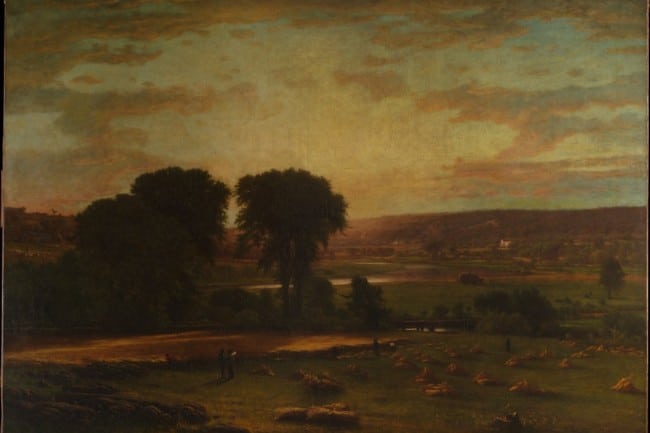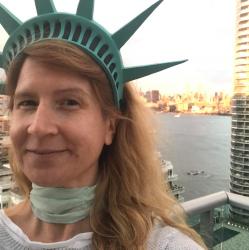When you think of Perth Amboy, New Jersey, you may think of the beautiful waterfront or the delicious seafood restaurants — but what many may not know is that this Middlesex County town has a fascinating past dating back to the 1800s. Raritan Bay Union was a utopian community in Perth Amboy, New Jersey that existed for seven years (1853 – 1860) as an effort to manifest gender, class, and racial equality through intentional living. Read on to learn all about the 19th-century utopia in Perth Amboy.
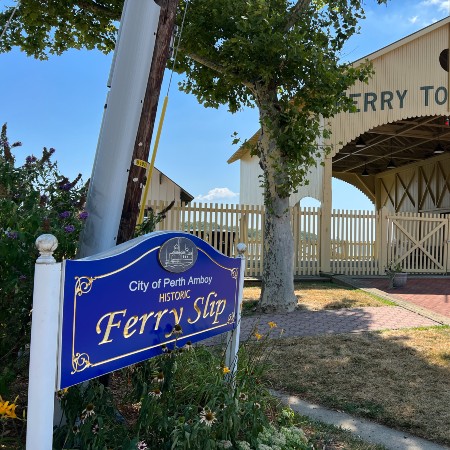
NJ Gardens of Eden
The Raritan Bay Union community was started in 1853 by wealthy investor Marcus Spring and his force of a wife, Rebecca Buffum Spring. Rebecca, a Quaker, was an avid follower of the great abolitionist, John Brown, and was determined to do all she could to end slavery. Both were convinced that society would change once it had witnessed moral living in action. The two were no strangers to the concept of utopian communities. They founded Raritan Bay Union after leaving the secular North American Phalanx community in Colts Neck Township, Monmouth County, New Jersey out of frustration with that society’s pluralistic lack of focus.
These intentional cooperative communities were incorporated by founders who then sold shares to stockholders who became members. Like the Shakers before them, they wished to plan and create a more perfect society. The latter half of the nineteenth century, during the decades leading up to the Civil War, was an especially intense period of American ideological fervor. Critiques of the still-new United States government drove the most optimistic to believe they might lead by example.
New Jersey locals made occasional attempts, well into the beginning of the twentieth century, to build a perfect society set apart from the corrupting influences of mainstream life. In 1906, Upton Sinclair, author of the scathing social critique The Jungle, founded the Helicon Home Colony in Englewood though it burned down after only half a year. Emma Goldman, who famously fought for racial equity, women’s reproductive rights, and freedom from the government while claiming, “If I can’t dance, I don’t want to be part of your revolution,” participated in the Stelton Colony in Piscataway NJ.
One aspect that set the Union apart from most other intentional communities was its economic design. Members were not forced to surrender their private property for the purposes of the group. Though the Union was meant to correct outside social inequalities and to save labor and money for members who would work collectively, members could live communally or in private residences. Along with their shared work within the community, they were expected to participate in social events and exchange knowledge gained in their individual intellectual pursuits.
Read More: Around the World in 80 Days: From Hoboken to Jersey City
Educating Abolitionists
A major aspect of the Union was its boarding school. The school was considered radical in its time. Female students were encouraged to participate in activities that were, at the time, generally limited to males. They were taught to speak in public, engage in physical sports, perform in theatrical plays, and be actively involved in social agitation for the causes espoused within the community.
The school was run by Theodore Weld, a well-known abolitionist and journalist who was married to the equally famous abolitionist, Angelina Grimké. Sisters Angelina and Sarah Grimké were teachers in the school, along with several other noted social reformers. There, they taught the children of other abolitionists, including Elizabeth Cady Stanton.
Black leadership was glaringly absent from this and other utopian communities of the era. Sarah Grimké tied the subordination of enslaved people and free women together, identifying both as unjustly deemed mentally inferior while being denied access to education. Prominent Black speakers came often to give presentations to the community and students. Yet, while the Grimké sisters championed the education of their Black nephews — sons of their brother, Henry — the Union school was hardly interracial.
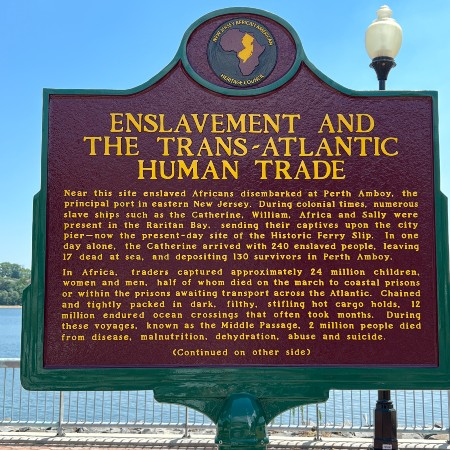
In this, and other ways, the Union was a place of contradiction. Contradictions around race abound in the history of Perth Amboy. The Perth Amboy wharf was New Jersey’s primary inbound port for selling enslaved people kidnapped out of Africa during the colonial settlement era. Yet, that same city would, in 1870, be the place where Thomas Mundy Peterson became the first free Black person in the US to vote in an election after the passage of the 15th Amendment to the Constitution.
See More: All About the Hamilton House Museum in Clifton, NJ
Out of Eden
The Union did not remain intact for long. The inconsistencies of beliefs and intentions that had driven the Welds to leave the Phalanx community and to found the Union emerged in their Perth Amboy community too. Perhaps unsurprisingly, not everyone who signed on to the overarching themes of racial, class, and gender equality shared the same ideas of how to express and live their idealism. Some of the variances in perspective amongst members were centered on philosophies of education and others on aspects of community life. Some members and visitors simply found the community stifling.
While visiting in 1856, Henry David Thoreau let it be known that he did not appreciate the degree to which members were expected to participate in community society. He was specifically aggrieved by his inclusion at each evening’s dance social. Less a revolutionary than a recluse, it isn’t terribly surprising that Thoreau’s notion of utopia did not include the famous dancing demanded by Emma Goldman.
The end of the Union as an incorporated venture did not mean the total dissolution of the community. In the post-Union years, Marcus Spring attempted to draw literary and artistic intellectuals to the spot. In 1864, Marcus invited artist George Inness to come to live at Eagleswood, the new name for the school and surrounding area. Often called “the father of American landscape painting,” Inness’ paintings of New England and the East Coast sparked an art movement referred to as Tonalist that could be described as artworks set into edit mode with the warmth mode turned all the way up, bathing scenes in rich yellow and red hues. Rather than pay rent, Inness presented Spring with his painting “Peace and Plenty” (1865) which is now on view in Gallery 760 of the American Wing at the MET Museum.
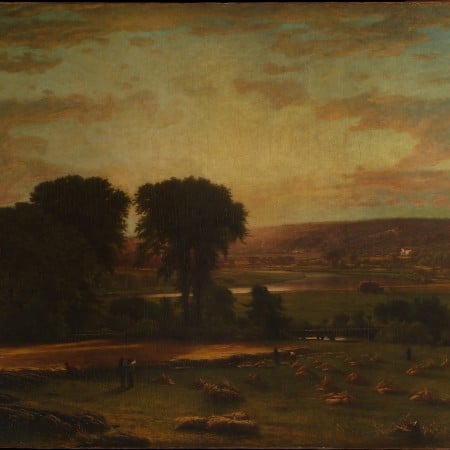
(Photo credit: metmuseum.org)

